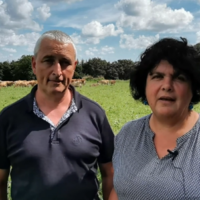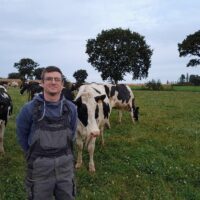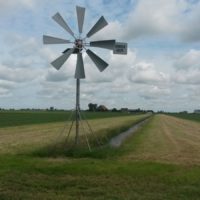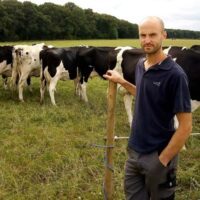Maximizing farm profits through ruminant grazing on traditional larch meadows
Description
Practice abstract
Extensive grassland is characterized by minimal cultivation intensity, including fewer cuts per year, lower livestock density per area in pastures, and generally poor soil nutrient content, often resulting in nutrient levels matching or falling below those exported by forage use. At the Schornhof, the Lintner family decided to preserve their extensive grassland and integrate it into their forage production.
The existing farm grassland areas comprise 24.1 ha, of which 11.4 ha are larch meadows, which consist of a combination of a meadow plant stand with a thin larch stand (agroforestry). Agroforestry describes the simultaneous use of surfaces, as well as in forestry use and agricultural production either in combination with livestock farming or by direct cultivation of crops arable or produce. Larch meadows are generally species-rich grassland. They have been managed by grazing instead of by mowing for more than 20 years on the Lintner farm.
To minimise machinery inputs and reduce labour, suckler cow husbandry (Tyrolean Grey, Original Braunvieh x Limousin) was chosen. The larch meadows not only make a major contribution to biodiversity, but also increase forage security in an area prone to drought. The shade provided by the trees cools the soil and undergrowth, reduces wind and thus evapotranspiration.
The combination of microclimate under the trees and open areas creates a diverse range of forage. Open areas provide early forage, while under the trees the forage grows more slowly and stays fresh for longer.
Main recommendation:
By minimising external inputs and maximising self-sufficiency, the farm strives for profit-oriented livestock farming.
Context profil





Additional information
| Main domain of innovation | Workload reduction |
|---|---|
| Agroclimatic area | Alpine |
| Climate | Moderate rainfall |
| Soil Type | Sand |
| Management | Pasture beef |
| Technical | Easy |
| Finance/investment | Low |
| Market | Local-rural |
| Social | Part-time farmer |




